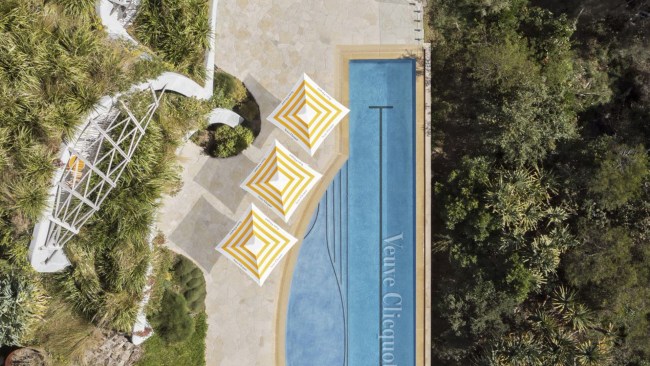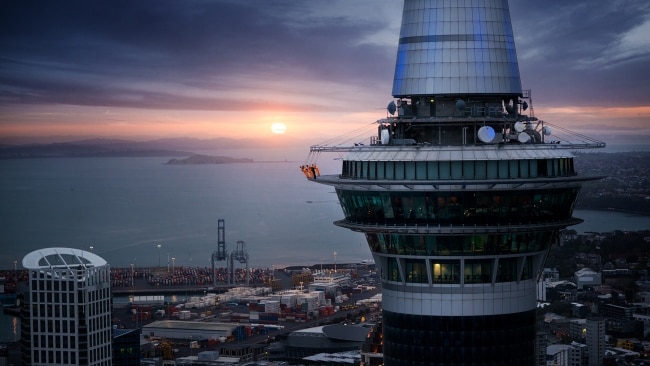Frank Lloyd Wright and Marion Mahony hotel has links to Walter Burley Griffin
This hotel in Iowa offes a rare chance to stay in a Frank Lloyd Wright building. It also has a major link to Australia.

When Chicago architect Frank Lloyd Wright ran away with the wife of a client in September 1909, he left his lieutenants to finish work on a hotel in Mason City, Iowa. One of those was his loyal assistant Marion Mahony, one of America’s first female architects, who would go on to marry Walter Burley Griffin two years later and help him design the city of Canberra.
Thanks to the work of Mahony and others in Wright’s studio, the Park Inn Hotel opened in September 1910. But it later closed and the building fell into disrepair. More than a century later, Wright’s Park Inn has been lovingly restored by local citizens at a cost of around $20 million and is the only remaining hotel designed by Wright.
It reopened in 2011 as the Historic Park Inn, offering 27 rooms (no two alike), the elegant 1910 Grille restaurant, a skylight room, underground bar and den, and the unique chance to stay in an original Wright building. For Australians, it is also a great base from which to tour the last group of houses designed by Griffin and his wife Marion in the US before they left for Australia in 1914.
The five Griffin houses cluster around Willow Creek, within walking distance of the hotel. One of these, the James Blythe House, has been owned for more than 50 years by Bob McCoy, a driving force in the Park Inn’s restoration. Another, the Joshua Melson House, is owned by Roger and Peggy Bang. Built from stone and into the cliffside, it is one of Griffin’s most striking. (After it was finished, Griffin climbed up the outside walls of the house from the creek bed to the top floor.)
Looking at these houses it is not hard to believe that Griffin might have become one of the leading Prairie School architects of America, had he not decide to move to Australia to build his “ideal city” in Canberra.
The Park Inn is small, but each room has been lovingly restored with a touch of Arts and Crafts style. The hotel is booked up well in advance and guests should ask for a room facing the park. One Historic Suite is refitted back to the days of the hotel’s grand opening in 1910, with a full-size brass bed and an original claw-footed bath tub. Mahony is believed to have worked on the original interior details such as the lighting and the art glass windows, and probably also the colourful tiles that have been reproduced on the outside, just under the roof.
Mason City bills itself as the birthplace of Robert Meredith Wilson, who wrote the Broadway play The Music Man, which became a Hollywood film. A walk across the famous footbridge in the movie takes one from the outskirts of town across Willow Creek to the Melson house. (The original footbridge was built by developer Joshua Melson, one of Mahony’s favourite clients.)
Mason City is not exactly on the beaten track. Commuter airline Air Choice One operates daily flights from Chicago and St Louis — operating from the last airport that Buddy Holly flew out of after playing at nearby Clear Lake. Otherwise the city is a two-hour drive south of Minneapolis-St Paul. If you do make that trip (and Australians who are not used to driving in snow should avoid it in winter), stop about halfway at the town of Owatonna to see one of Louis Sullivan’s famous jewel box banks. Designed by the Chicago architect who inspired both Wright and Griffin, it is still a functioning bank, but its staff are accustomed to tourists stopping in to look at the spectacular, high-ceilinged building with its historic murals and Arts and Crafts-inspired décor.
Mason City is not exactly hopping. It describes itself as An Architectural Hotbed with a strong emphasis on the work of Wright. But the combination of Wright and Griffin makes it a special town for Australians.
Not too far from the Griffin houses is Wright’s Stockman house, built for a local doctor in 1908 in the centre of the town. By some miracle of determination and logistics, civic-minded locals, including McCoy, managed to buy the house and have it transported by long-haul truck to vacant land on the outskirts of the city. After restoring it, the same citizens built the informative Architectural Interpretive Centre next door.
The Park Inn was the site of the last meeting of the Walter Burley Griffin Society of America. Upstairs, it retains something of a rabbit-warren feeling with the rooms flowing on slightly different levels. The underground bar provides a meeting place for tourists and locals; guests can sit in the skylight room on the ground floor and absorb its original atmosphere. The hotel was originally built with a bank attached. The high-ceilinged old bank area is now part of the hotel and available for banquets and conferences.
www.stoneycreekhotels.com



